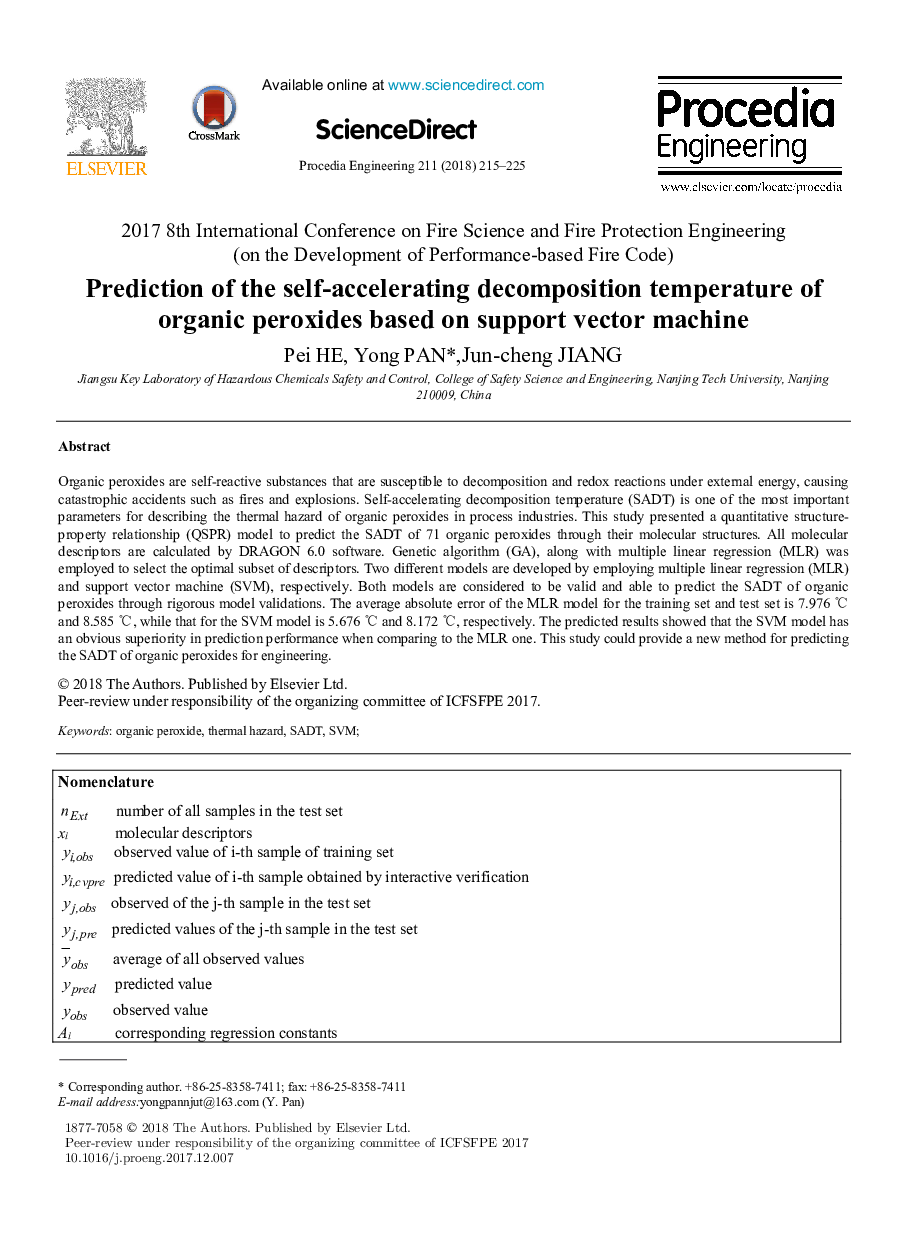| Article ID | Journal | Published Year | Pages | File Type |
|---|---|---|---|---|
| 7226231 | Procedia Engineering | 2018 | 11 Pages |
Abstract
Organic peroxides are self-reactive substances that are susceptible to decomposition and redox reactions under external energy, causing catastrophic accidents such as fires and explosions. Self-accelerating decomposition temperature (SADT) is one of the most important parameters for describing the thermal hazard of organic peroxides in process industries. This study presented a quantitative structure-property relationship (QSPR) model to predict the SADT of 71 organic peroxides through their molecular structures. All molecular descriptors are calculated by DRAGON 6.0 software. Genetic algorithm (GA), along with multiple linear regression (MLR) was employed to select the optimal subset of descriptors. Two different models are developed by employing multiple linear regression (MLR) and support vector machine (SVM), respectively. Both models are considered to be valid and able to predict the SADT of organic peroxides through rigorous model validations. The average absolute error of the MLR model for the training set and test set is 7.976 â and 8.585 â, while that for the SVM model is 5.676 â and 8.172 â, respectively. The predicted results showed that the SVM model has an obvious superiority in prediction performance when comparing to the MLR one. This study could provide a new method for predicting the SADT of organic peroxides for engineering.
Related Topics
Physical Sciences and Engineering
Engineering
Engineering (General)
Authors
Pei He, Yong Pan, Jun-cheng Jiang,
